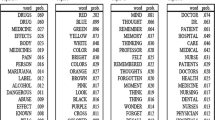Abstract
We propose a new method for mapping important factors abstracted from a real complex network into the topology of nodes and links. By this method, the effect of a node is denoted with its computable quality, such as the city scale with traffic network, the node throughput of communication network, the hit rates of a web site, and the individual prestige of human relationship. By this method, the interaction between nodes is denoted by the distance or length of links, such as the geographic distance between two cities in the traffic network, the bandwidth between two communication nodes, the number of hyperlinks for a webpage, and the friendship intensity of human relationship. That is, topologically, two-factor operations with node and link are generally expanded to four-factor operations with node, link, distance, and quality. Using this four-factor method, we analyze networking data and simulate the optimization of web mining to form a mining engine by excluding those redundant and irrelevant nodes. The method can lead to the reduction of complicated messy web site structures to a new informative concise graph. In a prototype system for mining informative structure, several experiments for real networking data sets have shown encouraging results in both discovered knowledge and knowledge discovery rate.
Similar content being viewed by others
Author information
Authors and Affiliations
Editor information
Editors and Affiliations
Rights and permissions
Copyright information
© 2005 Springer-Verlag Berlin Heidelberg
About this paper
Cite this paper
Li, D. (2005). Complex Networks and Network Data Mining. In: Zhou, L., Ooi, B.C., Meng, X. (eds) Database Systems for Advanced Applications. DASFAA 2005. Lecture Notes in Computer Science, vol 3453. Springer, Berlin, Heidelberg. https://doi.org/10.1007/11408079_3
Download citation
DOI: https://doi.org/10.1007/11408079_3
Publisher Name: Springer, Berlin, Heidelberg
Print ISBN: 978-3-540-25334-1
Online ISBN: 978-3-540-32005-0
eBook Packages: Computer ScienceComputer Science (R0)




